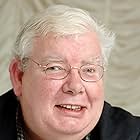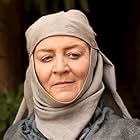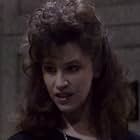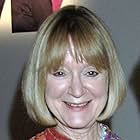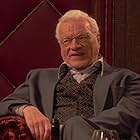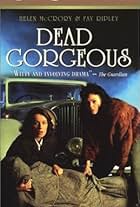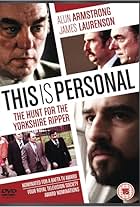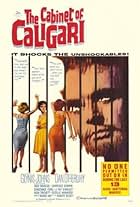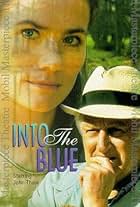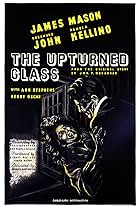Dramatisation of the real-life case of George Joseph Smith who was hanged in 1915 for the murder of his three wives, each of whom he killed in turn by drowning them in the bath while trying ... Read allDramatisation of the real-life case of George Joseph Smith who was hanged in 1915 for the murder of his three wives, each of whom he killed in turn by drowning them in the bath while trying to make the deaths look like accidents.Dramatisation of the real-life case of George Joseph Smith who was hanged in 1915 for the murder of his three wives, each of whom he killed in turn by drowning them in the bath while trying to make the deaths look like accidents.
Photos
Emma Owen
- Alice Burnham
- (as Emma Ferguson)
- Director
- Writer
- All cast & crew
- Production, box office & more at IMDbPro
Storyline
Did you know
- GoofsGiven that the events take place between 1913 and 1915, we should not see a steam train bearing the British Railways logo.
- SoundtracksBeside the Seaside
Sung by Anna in the tub
Featured review
This well-made Yorkshire TV movie was made by Glenn Chandler and Harry Bradbeer,the same writer/director team that produced "A is for Acid" on another British serial killer, John Haigh a year before. This time they have constructed the piece more artfully, using the trial as a base and telling the story via flashbacks (the trial in the Haigh case, where the only issue was his sanity, was not shown). This enables the inclusion of Edward Marshall Hall, one of the most famous barristers of his time and Smith's defence counsel as a character, though he in reality played a small and undistinguished part in the story.
Smith preyed on a certain type of genteel single woman, pretty, but almost on the shelf at 30 or so, with some family money tucked away, anxious to escape from their family or the servitude of being some demanding old lady's companion. In one case, Bessie Munday, Smith absconded with her goods after their "marriage", yet she welcomed him back 12 months later with fatal results. The best things about this film are the performances of the five actresses who play the "wives", for they manage to convey how someone like Smith could get away with it (though like Haigh he did it once too often). Wife number 2, Edith, to whom George returned between bride drownings, remained loyal even when George was in the dock.
Martin Kemp ("Eastenders"), as Smith, and with a small moustache, bears an unfortunate resemblance to the late Adolf Hitler, or rather he looks as Hitler (aged about 40) would have looked had he been better looking. He's fine in the part of Smith and has much more of an emotional range than Martin Clunes did as Haigh. Again though, there is something of a veil over what makes him tick. Smith was a career criminal who had his first spell in a reformatory at the age of 9 it seems his deceit and robbery modus operandi degenerated over time into drowning as well as fleecing his victims. It seems "ordinary decent criminals" can go bad if they are not stopped in time.
One interesting aspect of the investigation was the part played by a youngish Bernard Spilsbury, the famous Home Office pathologist, in working out how Smith had managed to drown his victims. Acting on Spilsbury's advice, Detective Neil ran a series of re-enactments using female swimmers. He discovered that the key was the element of surprise a sharp tug on the ankles followed by immersion of the head could result in almost instant unconsciousness. The re-enactment is shown in the film but with no real explanation of what was discovered. Spilsbury's contribution is not mentioned.
Another interesting aspect of the case was that Smith, under the criminal procedure of the day, could only be charged with one murder at a time. If there had only been evidence of one brides' death in the bath Smith might very well been acquitted. But the prosecution was allowed to put in evidence of two of the other deaths as "similar facts" to show that what happened was systematic conduct, not a mere accident.
.The attempt to use Marshall Hall to provide a bit of interest is a dismal failure Richard Griffiths, who can be wonderful in the right part, is completely miscast Marshall Hall was smooth and eloquent, not an obese figure of fun with a whoopee cushion, and his role is almost incidental, even as portrayed in the film. There wasn't much counsel could do in what was an open and shut case (the jury was out for 20 minutes).
For dramatic purposes the film alters the story somewhat. It has two of the wives meeting up at the trial; Caroline Thornhill, his only legal wife, who fled to Canada in 1903 after giving evidence against Smith in an earlier case, and the loyal Edith, who is left at the end of the film standing in a bit of a daze. It is apparently true, however, that the day after Smith was executed, Caroline, now a widow, married her Canadian soldier boyfriend.
The social milieu that allowed a villain like Smith to prosper is long gone, but serial killers will probably always be with us the circumstances required to produce them still seem to be around. Ted Bundy, unlike Smith, didn't do it for the money, but he had the same fatal charm.
Smith preyed on a certain type of genteel single woman, pretty, but almost on the shelf at 30 or so, with some family money tucked away, anxious to escape from their family or the servitude of being some demanding old lady's companion. In one case, Bessie Munday, Smith absconded with her goods after their "marriage", yet she welcomed him back 12 months later with fatal results. The best things about this film are the performances of the five actresses who play the "wives", for they manage to convey how someone like Smith could get away with it (though like Haigh he did it once too often). Wife number 2, Edith, to whom George returned between bride drownings, remained loyal even when George was in the dock.
Martin Kemp ("Eastenders"), as Smith, and with a small moustache, bears an unfortunate resemblance to the late Adolf Hitler, or rather he looks as Hitler (aged about 40) would have looked had he been better looking. He's fine in the part of Smith and has much more of an emotional range than Martin Clunes did as Haigh. Again though, there is something of a veil over what makes him tick. Smith was a career criminal who had his first spell in a reformatory at the age of 9 it seems his deceit and robbery modus operandi degenerated over time into drowning as well as fleecing his victims. It seems "ordinary decent criminals" can go bad if they are not stopped in time.
One interesting aspect of the investigation was the part played by a youngish Bernard Spilsbury, the famous Home Office pathologist, in working out how Smith had managed to drown his victims. Acting on Spilsbury's advice, Detective Neil ran a series of re-enactments using female swimmers. He discovered that the key was the element of surprise a sharp tug on the ankles followed by immersion of the head could result in almost instant unconsciousness. The re-enactment is shown in the film but with no real explanation of what was discovered. Spilsbury's contribution is not mentioned.
Another interesting aspect of the case was that Smith, under the criminal procedure of the day, could only be charged with one murder at a time. If there had only been evidence of one brides' death in the bath Smith might very well been acquitted. But the prosecution was allowed to put in evidence of two of the other deaths as "similar facts" to show that what happened was systematic conduct, not a mere accident.
.The attempt to use Marshall Hall to provide a bit of interest is a dismal failure Richard Griffiths, who can be wonderful in the right part, is completely miscast Marshall Hall was smooth and eloquent, not an obese figure of fun with a whoopee cushion, and his role is almost incidental, even as portrayed in the film. There wasn't much counsel could do in what was an open and shut case (the jury was out for 20 minutes).
For dramatic purposes the film alters the story somewhat. It has two of the wives meeting up at the trial; Caroline Thornhill, his only legal wife, who fled to Canada in 1903 after giving evidence against Smith in an earlier case, and the loyal Edith, who is left at the end of the film standing in a bit of a daze. It is apparently true, however, that the day after Smith was executed, Caroline, now a widow, married her Canadian soldier boyfriend.
The social milieu that allowed a villain like Smith to prosper is long gone, but serial killers will probably always be with us the circumstances required to produce them still seem to be around. Ted Bundy, unlike Smith, didn't do it for the money, but he had the same fatal charm.
Details
- Release date
- Country of origin
- Language
- Also known as
- Den mördande bigamisten
- Filming locations
- Nunnington Hall, Nr.York, North Yorkshire, England, UK(location - used early on in film, in scenes with Bessie Mundy at river)
- Production company
- See more company credits at IMDbPro
Contribute to this page
Suggest an edit or add missing content



